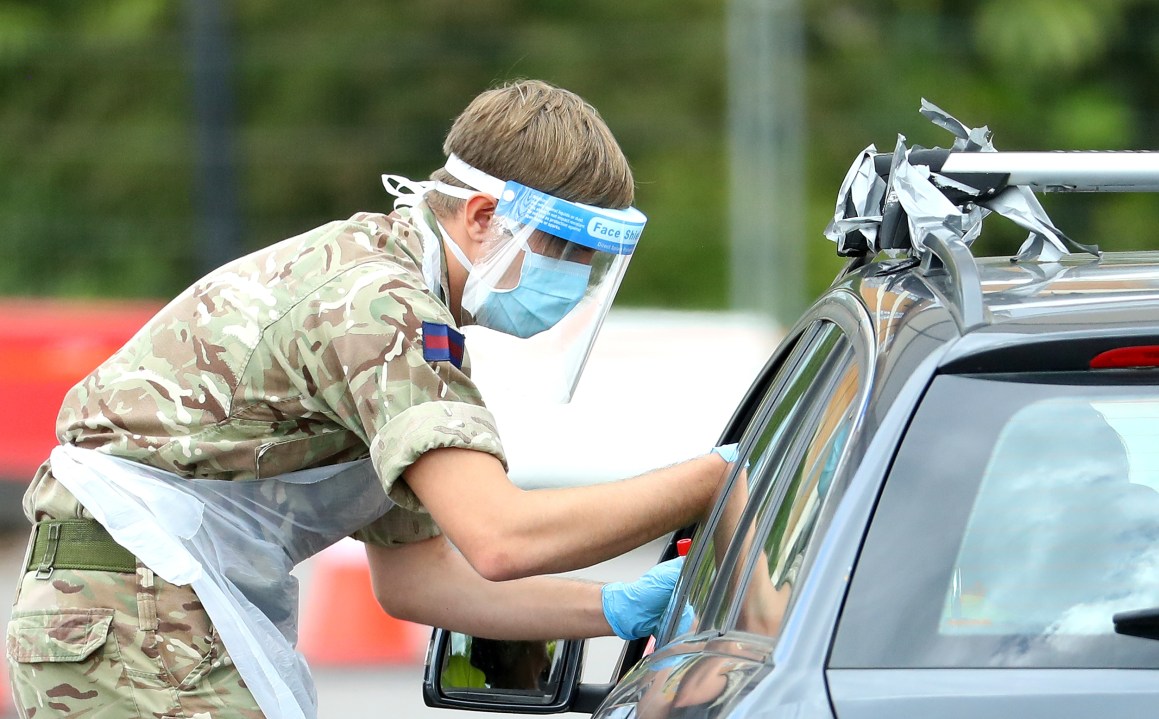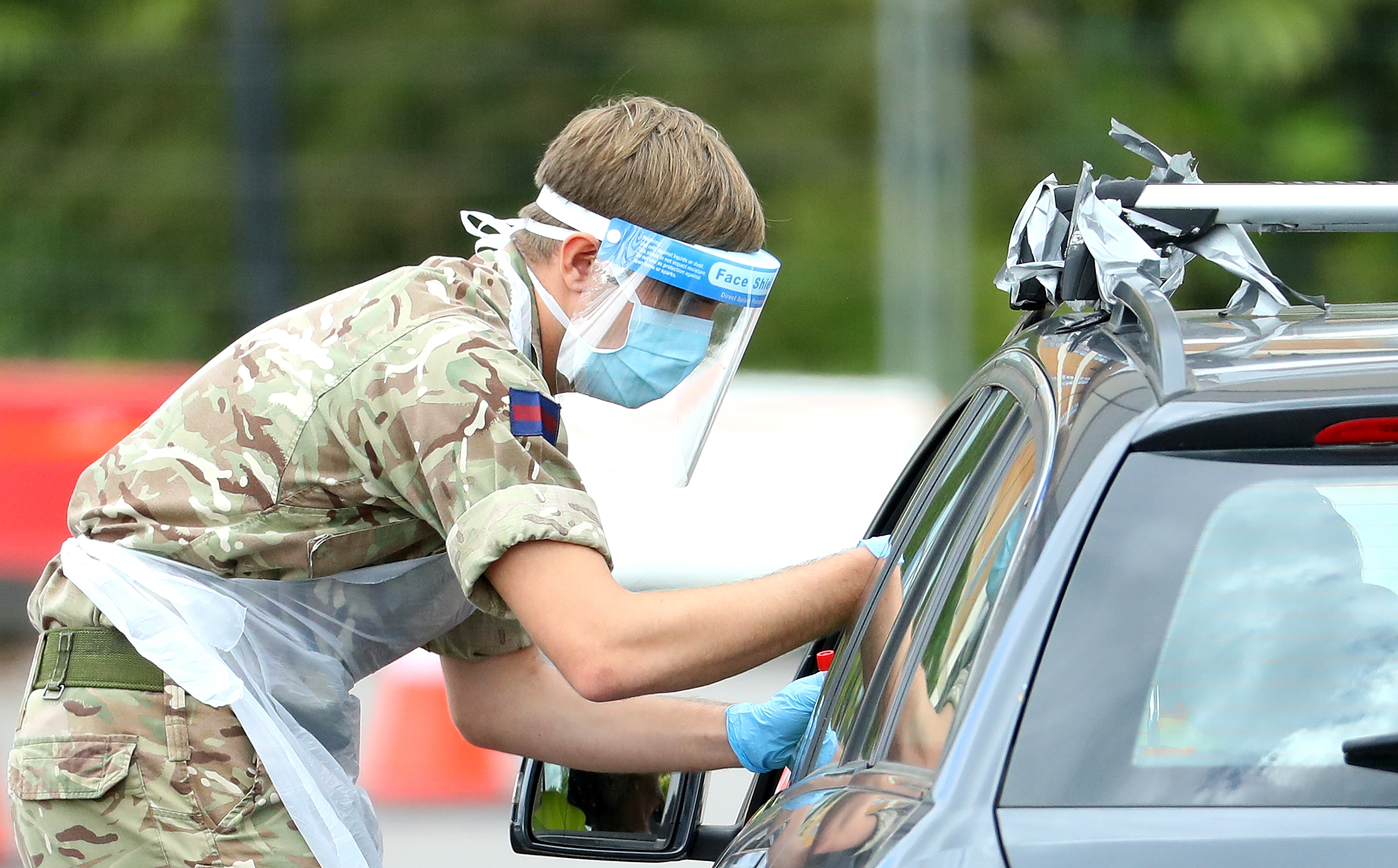Every evening, at around 5 o’clock, a minister walks through the large panelled doors to Downing Street’s state dining room and delivers the daily coronavirus briefing. The conference always begins in the same way – ‘I’d like to update you on the latest daily figures’. The minister in question then proceeds to tell us just how many tests have been carried out over the last 24 hours and the number of positive cases discovered. We are left to conclude that the remaining tests must have come back as negative, that no infection was detected.
However, there is a third category of result: void tests. These are tests that proved inconclusive, either because the sample wasn’t taken correctly or because of some other issue involving the lab. Essentially, the test failed. There have been reports in recent weeks that suggest such failures, but now Coffee House can reveal that at least 91,000 swab tests have come back as void.
Currently, over 8 per cent of people who were tested in ‘pillar two’ have been told that their test result is ‘unclear’. Pillar two is the strand of the government’s testing strategy that deals with at-home tests and those carried out at drive-through centres. This pillar is designed for certain key workers and those who have been randomly selected for testing.
The real figure could be even higher than 91,000. The department was unable at the time of writing to give an exact number of voided ‘pillar one’ tests – those carried out on sick patients and critical health workers which are processed in existing NHS labs. However, they suggested that there was a presumed base rate of around 3 per cent, which would suggest at least another 30,000 more void tests.
Sarah Champion, 56, from Salisbury, told me that she was randomly selected for a drive through swab test and that both she and her husband visited their local centre on Saturday 9 May. They were handed the swab tests through their car window and told to administer it themselves. ‘I was very, very thorough at following the instructions,’ she explained. ‘I followed the instructions to the letter – stuck the thing down my throat, stuck it up my nose as instructed, I think it was for 15 seconds, something like that.’
Six days later, on Friday 15 May, both Sarah and her husband received texts from the NHS saying that their results had come back as ‘unclear’. They are just two of those 91,000 failed tests.
‘I’m increasingly concerned that this is something that’s not really being openly discussed’
One of the problems seems to be that self-administered tests are difficult to carry out – the swabbing process is highly invasive. Lawrence Young, professor of molecular oncology at Warwick, told me: ‘To really sample the nasopharynx, it’s not just a case of putting a swab around the nostrils, it has to go deep into the nasopharynx at the back of the nose – it actually hurts’.
Yet the NHS instructions given to Sarah make clear that while the test might be ‘uncomfortable’, patients should stop if they ‘feel strong resistance or pain’. In other words, she was told to stop swabbing if it hurt. The tests may be accurate in a clinical setting but the problem comes when people are expected to try to carry out the procedure themselves in the real world.
‘I think the sampling is unreliable,’ explains professor Young, who works in collaborations with an NHS laboratory. ‘I’m increasingly concerned that this is something that’s not really being openly discussed.’
Young worries about another possibility. That the tests can be unreliable in a different, perhaps even more concerning, way –that people are being told they’re Covid clear when, in fact, they do have the virus. Young believes the proportion of false negatives could be as high as 30 per cent.
In some situations, a single test might prove negative whereas you actually know the patient has got the infection from other symptoms and signs. So this raises a massive issue about the whole self-testing regime and has raised other concerns about the drive-in centres.
This concern about the usefulness of a single test is reflected in the data. Last Sunday, over 100,000 tests were carried out but were administered to just 67,000 people. Clearly, individuals are being asked to take multiple tests.
The Department of Health said that the number of inconclusive tests should ‘significantly decrease’ as the programme continues and that voided tests occur ‘if not administered correctly, delayed in transport to the laboratory, or [are] subject to problems with labelling, barcoding or packaging’.
But so far, most of the tests have been administered within a clinical setting, within hospitals and care homes. If Matt Hancock’s massive contact tracing programme is going to be effective, surely the number of self-administered home tests is going to have to increase – and with it the risk of void tests.
It is worth remembering that swab testing, while vital, isn’t the only element of the government’s coronavirus response. People are already being asked to self-isolate if they show one of the officially listed symptoms. Medical experts are able to make diagnoses and act accordingly, regardless of whether a test actually confirms their professional opinion. Professor Young explains:
You have to live with the fact that with a single negative test, you still need to be a little bit concerned. So when you’re using track and trace, you might need to test more than once. For an effective track and trace, it’s fine if you’ve got people [who are] positive but for the negatives you might need to retest them… The modellers calculate all of this, even though it doesn’t sound great, for population based testing, even if it’s 70 or 80 per cent accurate, you can sort of live with that up to a point.
Such modelling may well be effective on a regional level. It can help the government work out roughly where flair-ups are occurring. But when it comes to tracing the spread of infection from one person to another, within a group of real people rather than statistical data points, you really do need to know who has actually got the virus.
For Sarah and her husband, her immediate concern is getting a second test. She wants to know if she might be spreading the infection around her neighbours without knowing it. NHS advice is, after all, to continue as normal if you don’t exhibit any of the standard symptoms. Asked if she had been contacted by the NHS since her inconclusive result, Sarah said she had been told ‘nothing at all.’
‘I get the impression it’s up to me to chase it up… It all seems to have died a death. There’s obviously personal responsibility – but I could be wandering around infected.’ If the government’s testing programme is going to be effective, people like Sarah will need to be dealt with in days, not weeks. Otherwise, the very idea of test and trace will become increasingly problematic.
This article is free to read
To unlock more articles, subscribe to get 3 months of unlimited access for just $5









Comments
Join the debate for just £1 a month
Be part of the conversation with other Spectator readers by getting your first three months for £3.
UNLOCK ACCESS Just £1 a monthAlready a subscriber? Log in